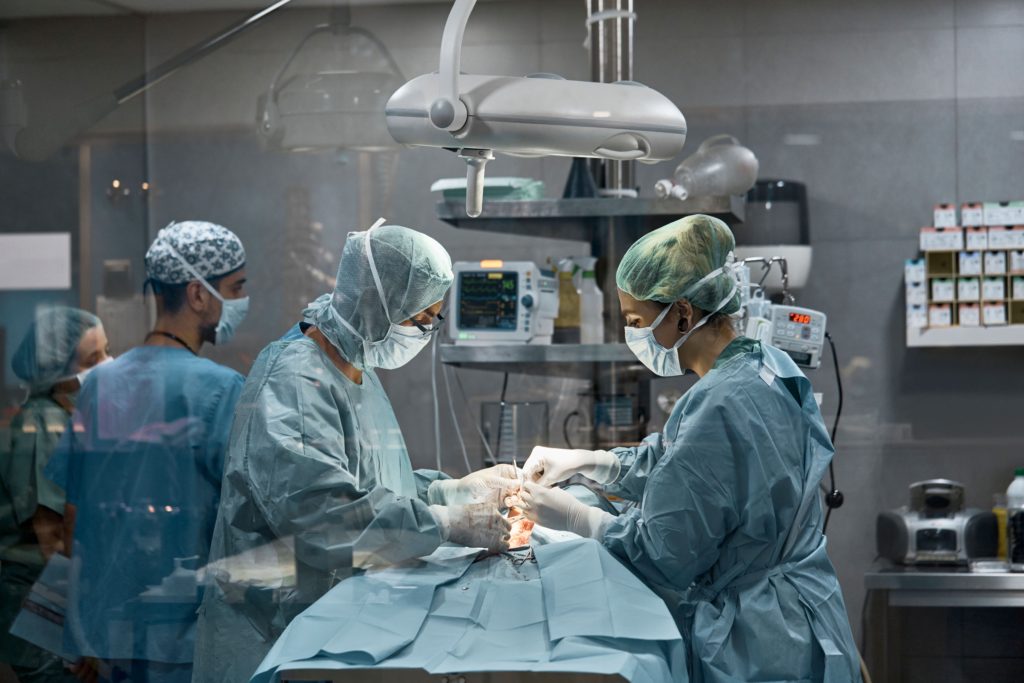Sudden cardiac death is prevalent among patients with conduction abnormalities, New York Heart Association Heart Failure of class 4, and other heart disorders. Large clinical trials have shown that implantable technology can mitigate the risk of death in these patients. Implantable Cardioverter Defibrillators (ICDs) are devices which detect native malignant arrhythmias in such patients and deliver electrical cardioversion. Over 300,000 patients in the US have ICDs, and the technology surrounding these devices is changing at a rapid pace. With the growing prevalence of patients with ICDs presenting for surgery and procedures requiring anesthesia care, anesthesiologists must possess a comprehensive knowledge of how to manage these devices for emergent and elective procedures.
The first distinction anesthesiologists must make regarding implantable devices preoperatively is their nature: does the patient have an ICD, a pacemaker, or another type of implantable technology? The indication for the device, battery life, and function when a magnet is applied should also be reviewed. Often, the most expeditious way to illuminate this information is by contacting a manufacturer representative. Patients may also have information cards about their implantable device. Details regarding the device should be reviewed from the managing cardiologist notes. For ICDs specifically, device interrogations should be performed within six months of the presenting procedure. However, physicians should defer to their hospital or practices written policies regarding the acceptable time frame from where an interrogation report is acceptable.
General recommendations regarding ICD management are aimed at reducing electromagnetic interference (EMI), most often from electrosurgical units (monopolar or bipolar energy). Avoidance of monopolar cautery is advised whenever possible, as the risk of EMI is higher [1]. Grounding pads and the current path should be placed as far away from ICD and the heart as possible. The surgeon should be encouraged to apply energy in short, intermittent bursts at the lowest acceptable energy. Anesthesiologists should be aware that the risk of EMI in infraumbilical surgeries is low, supraumbilical is higher, and cardiac surgery is the highest. Other intraoperative sources of EMI include nerve stimulators, radiofrequency ablation, and lithotripsy.
Further details regarding the intraoperative management of patients with ICDs varies based on the governing body offering recommendations. For instance, the American Society of Anesthesiologists (ASA) recommend reprogramming the device to an asynchronous mode. Other governing bodies, mostly in Europe, suggestion placing a magnet on the device to prevent ICD discharge when “over sensing” a source of EMI as cardiac conduction. Most advisory groups agree that ICD devices should be interrogated at the conclusion of a procedure to ensure functionality when a patient is discharged home.
The technology of ICDs has advanced beyond the application of a defibrillation dose of energy for tachyarrhythmias. For instance, anti-tachycardia pacing (ATP) provides pacemaker activity from ICDs to “break” arrhythmias without expending energy for defibrillation. Anesthesia providers should be aware of this capability, as active ATP function may cause undesired intraoperative tachycardia with EMI. Magnets most often do not disable this feature of ICDs, thus reprogramming is required. As such, this undesirable setting should be deactivated by a device representative or cardiologist prior to surgery.
